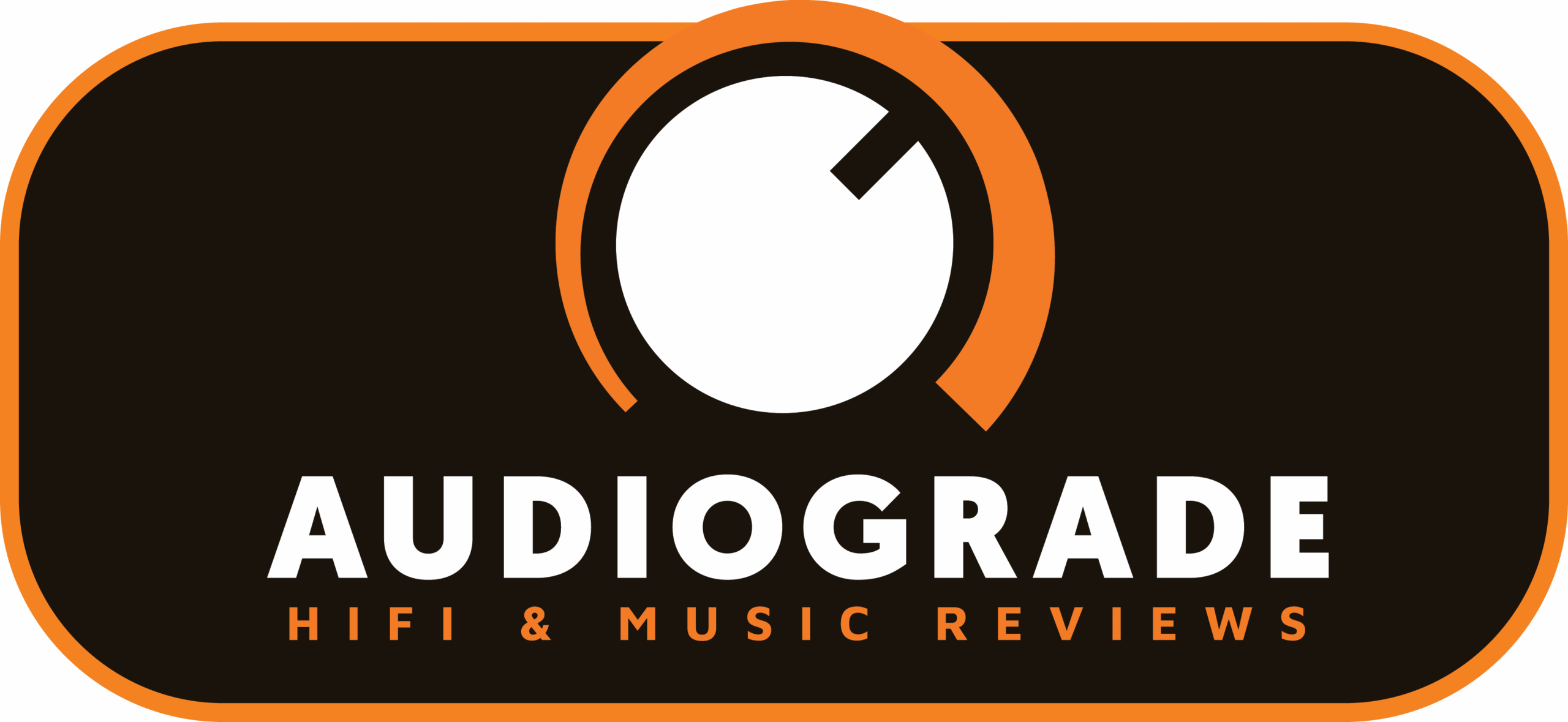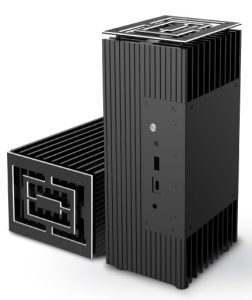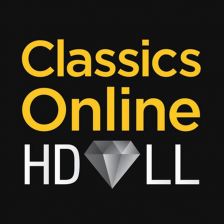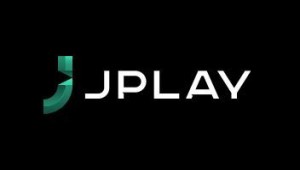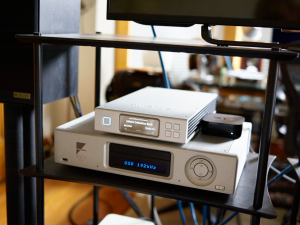I believe that the hottest word recently used by people listening to decent quality music is Tidal. Tidal is a paid streaming service offering music files in a lossless 16/44 FLAC quality (high quality CD) and hi-res video; The latest addition is the Tidal Master, which offers hi-res PCM audio encoded in MQA (Master Quality Authenticated). They are streamed in 24/44.1 resolution and they are compatible with any file player/streamer. But there are something more: utilizing clever encoding on the receiver side (assuming the receiver is equipped with MQA decoder) they can be unpacked even to 24/352,8, ie DXD, resolution. It's a revolution because the compressed MQA files are relatively small and contain information comparable to Master Quality recordings.
This is related to the music market as such. As Paul Messenger wrote in the Industry Update section of Stereophile magazine, in 2017 the streaming services market has grown significantly; As compared to the previous year, the value of the streaming market increased by 67.5% (Stereophile Vol. 40, 2017, No. 5, p. 15). More importantly, at the same time, the value of the online store market, where you can buy and download audio files, decreased by 29.6%. The trend is clear: more and more people prefer to listen to music on demand and do not need to own it stored on some medium.
Young people have been doing so for a long time. For those who particularly care about sound quality until recently, the obstacle that could not be overcome was size of files and transmission speed. In order to play 24/96 and 24/192 high definition files, it was necessary to first download them to their device and then play them. Higher download speeds, MQA encoding and, above all, the emergence of streaming services such as Tidal completely changed this state of affairs.
I wonder how this situation will develop. Perhaps so that in the entry level and medium price ranges streaming will actually dominate, and will only be supplemented with physical media such as LP and CD. At the same time, at least in my opinion, there will be a large group of music lovers and audiophiles who will, however, want to have files at home, gathered in one place. These enthusiasts are the target group of products such as the Innuos ZENith MkII Std, reviewed by High Fidelity.pl in January or the Japanese Fidata HFAS1-S10U.
HFAS1-S10U
Fidata HFAS1 is a network audio server designed to let you enjoy high-end audio quality. You should not overlook our efforts to achieve the best possible sound—from the selection of materials for the chassis, to electronic circuits and individual components. This product is a culmination of many prototypes and countless hours spent on listening to them. It allowed us to achieve a unique performance which deserves to be called high-end, offered in a unique form.
Fidata is a brand owned by I-O Data, a Japanese computer peripheral manufacturer. Founded in 1976 in Kanzawa, the company is known for almost indestructible external hard drives that went unscathed when dropped from a height of 122 cm (4 feet) during tests. In 2000, company designed their first mp3 player, and in 2005 the first DLNA compatible server. In 2012, a project was started with a goal of launching and audio network server. Two years later, the prototype was presented at the Tokyo Audio and Home Theater Exhibition. Another two years passed before the final version was ready.
Since 2016 Fidata delivers network audio servers for high-end systems. These servers can be connected directly to the file players using LAN cable (RJ-45). In such case the HFAS1-S10U works as classic NAS (external hard drive). These servers can also work as audio file transports—using USB output they can be connected to any digital-to-analog converter with compatible USB 2.0 input. In this mode, the device must still be connected to the home network; User can than control it using some OpenHome application (eg Linn's Kinsky) or via DLNA.
The HFAS1-S10U features a mid-size, low-profile, perfectly crafted aluminum chassis. It stands on specially developed feet—one can use three or four of them. There are two Samsung 850EVO SSDs inside, selected for their speed and reliability. The server is compatible with the Digital Living Network Alliance (DLNA) standard and uses Twonky Server 7 software, a specialized server program modified for this particular manufacturer.
The unit was designed by a team of four people: Mr. Yasunori Kitamura responsible for planning, Mr. Akiya Miyamoto responsible for hardware part, Mr. Shinichi Morita who prepared the design, and Mr. Yuji Minagawa—a software engineer. From the photos on the website it is clear that they are young and very young people, which means ones, who "feel" this type of products best. One can find there also comments of each of them regarding this product as well as a wealth of information about its construction. It tells us that the designers were paying attention to every aspect, from the chassis, through power supply and ground guidance, to the word clock and all components.
The unit can write and play via the RJ-45 and USB outputs, both 16-bit, 24-bit, and 32-bit PCM files with a sampling frequency of 44.1 to 385 kHz, as well as the 2.8 MHz, 5.6 MHz, and 11.2 MHz (DSF and DFF) DSD; The RJ-45 output delivers DSD signal in native form mode and the USB output sends it as DoP (ie DSD files packed in "PCM" container).
Connection to server is very simple—all one needs is a network cable and LAN (or USB) and without any extra work the server is ready to go. Files on it can be transferred to it either from a pendrive or from a computer—via a home network.
TEST METHODOLOGY
The files' player/server Fidelio was tested in both modes for which it was intended. As a file player and server, it worked with the Accuphase DP-560 SACD player. The signal from its USB output was sent to Player's input using Curious cable. To be able to control it from a tablet or a smartphone, one has to connect the device to the router with a LAN cable (RJ-45). I used the Acoustic Revive LAN-1.0 PA with the RLI-1 filter on both ends—the intention was to isolate the tested device (and the whole system) from noise in the best possible way. The same cable was used to connect the Fidelio server to the Lumin T1 file player.
The HFAS1-S10U is an exceptionally well designed and made high-end device. That is why it is worth to support it with all the best accessories one has at one's disposal. During the test, I placed it on Pro Audio Bono Ceramic 7SN feet and on the pneumatic Acoustic Revive RAF-48H platform. On top of the device I placed the latest version of the passive Verictum X Block filter. The unit was powered using the Acoustic Revive Power Reference Triple with RAS-14 Triple-C filter. Moreover, unused LAN and USB sockets I closed with special Acoustic Revive terminators (RLT-1 and RUT-1 respectively). The efforts to ensure as good conditions for this device as possible really pays off!
Recordings used for the test (a selection)
During the test I used CDs and PCM and DSD files. The files came from HDTracks.com and LinnRecords.com stores, as well as from rips of my own DVD-As and HRx discs from Reference Recordings. I also used DSD and PCM files offered me by so befriended recording and mastering studios.
SOUND
There will be no exaggeration when I say that the Fidata server was the best music server/files player I have ever listened to in my system. I knew that I received a very special product, in which every detail was thought-through, refined, that the product was based on solid engineering, but fine-tuned as a result of numerous listening sessions. In addition, it comes from some Japanese geeks. Still, the sound quality surprised me.
For the first time outside the recording or mastering studio I heard things that we get with files only in the top high end. The most important was the size of the instruments and the three dimensionality of their bodies. Immediately behind them came the tone presentation and then the dynamics. These are elements that I still usually have doubts when listening to music files. They are, for me, presented in a much worse way than when music is played from CD, vinyl, or even more so from analogue master-tape. And it does not matter whether I use CD rips or hi-res 24/192 and DSD files (also coming directly from mastering studios)—these deficiencies hurt my ears, not allowing me to break through the layer of technical aspects of the recordings to the emotion layer of music.
Fidata server is completely different from almost everything I have heard so far in my system, because it is able to deliver also all these elements in a proper way. The performance of this device - both when working as a server and a file player—was an antithesis of non-involving presentation. It was a full-blooded, incredibly rich performance, reminding me a lot of what I've heard with Kronos Pro Ltd. MkII turntable. It offered me something like "tube" density, lack of any harshness and powerful, always active bass.
I was particularly struck by the absolute velvetness of the sound, including that of the background. I listened to "Sleepwalkers" track by Ryuichi Sakamoto and David Sylvian from the album with the same title—it opens with a strong Sylvian vocal, that in the "wrong hands" can sound a bit rough. Fidata played it like a pro, ie pumping a bit the voice energy, but not exceeding the point where it would be too much. In turn, the voice of Jim Morrison (The Doors) from the title track of their debut album, remastered by Analogue Productions, was presented from a bigger distance, was smaller, but still dark, on spot, exactly the way it should be.
And all these were just 16/44,1 rips. With hi-res files everything was much freer and better differentiated. The tone was rather sweet and the bass was warm. And it is the bass that decides about sonic character of this presentation and defines the tested device. On the one hand, the HFAS1-S10U server nicely presents the true nature of played recordings, it does not "overshadow" sonic characters of other devices in the system, file players and DACs. However, on the other hand, these two elements—sweetness and warm bass—appear with any device and with each recording.
This is an obvious modification and deviation from the accuracy or neutrality. But, that's my opinion, is a modification going in the right direction. True neutrality does not exist, because we there are always some modifications. In my opinion, the best devices go for richness, darkness, density and dynamics, like Fidata. It is incredible, how well this device represents the volume of sounds and their body—like the best turntables. Similarly, it treats high tones. Compared to what I know from analogue master-tapes they are warmer and less "attacking". But honestly, no device, maybe except for the TechDAS Air Force Premium turntable with the Zero motor that I listened to at the Munich High End Show 2017, with records selected by its creator, Hideaki Nishikawa, can not do that.
Fidata handles this in a different way, that is, it presents a big sound, does not flood listener with details, delivering a resolving, deep presentation. There is a fantastic dynamics, thanks to which DSD records, such as Billie Holiday (Body and Soul), Dire Straits (Brothers in Arms), Sunshine Of Your Love by Cream or Abide With Me by Thelenious Monk sounded in an open and fast way, without this characteristic manner in which they are usually played. This manners I mentioned means warming them up and smoothing of the attack, which results from not quite perfect handling of high frequency noise, one of the inherent elements of the DSD system.
Fidata plays in such a way as if the problem doesn't exist. Perhaps that is why the DSD files (including DSD128) were not so different from the 24/96 and 24/192 PCM files, as is usually the case. There were some differences I was still able to point out, but they were not decisive, because both types of files sounded as described above. If I were to get really deep into differences I would just say that DSD files played in a more dynamic way, and PCM showed better bass control. But when I played the 24/88.2 files from remasters of the Polish Jazz that I got straight from the studio, I had no problem with their dynamics.
Summary
More and more comparisons and references come to mind, and other features call for mentioning them too. I do not want to extend this review indefinitely, because the message is simple: it's an excellent device that sounded a lot like a high-end turntable. Its characteristic features are the sweetness of treble, large phantom images, especially vocals and powerful, slightly "voiced" bass. It is a bit soft, but that should not be a problem. The depth of sound is amazing. Thanks to these features, for the first time in my life, I became seriously interested in audio files, recognizing their potential.
The soundstage is rendered easily, it never attracts attention - and this is something that may not appeal to those who require precise location, openness and "breathing"—that's something Fidata did not offer. I realized this fact only when writing this text, when I finally tried to get all the sonic features of the described device in order. While listening to the music, I did not pay any attention to it, because everything was so natural, so normal. If digital audio files take this direction, we will finally get a sound source equivalent to the best sources using physical media. Bravo!!! The Fidata HFAS1-S10U server / player receives a "High Fidelity" RED Fingerprint award.
DESIGN
Fidata HFAS1-S10U may work a server and transport of audio files. This means that it can work like a classic files transport one connects with a USB cable to DAC's input to have a complete audio source. Second possibility is working as a server based on Twonky software. This means that one needs to connect it using a RJ-45 Ethernet cable to an audio player device. Fidata will then work as a classic NAS, but without having to send a signal through the router. One has to connect it to the router so that it can be controlled from a smartphone or tablet. For this purpose one can use any OpenHome software—in my case it was Kinsky from Linn.
Fidata's minimalist design was prepared by true enthusiasts. Its enclosure consists of dozens of elements, each of which has been repeatedly examined and "listened to". The upper wall is a 4 mm plate, the thickness of which has been determined by the listening to the device. At the bottom there is a 2.3 mm thick, weighing 2.2 kg copper plate, which shields the electronics. The side panels were made up of four elements. Places of contact are not accidental—the idea of how to connect them was borrowed from the technique used in building Japanese furniture. And finally the feet – these are made of aluminum and you can use three or four of them.
The interior is split across with the shield, isolating the hard drives placed in the front from the electronics at the rear. Two Samsung 850EVO SSDs, selected for their longevity, are used in the reviewed version. V-NAND 3D memory chips are integrated into the drives, which minimize the impact of small voltage changes on the drive. The disks can be configured in several ways, eg in RAID mode, where one disk is used for music playback and the other one is used as a backup. Backup can also stored on an external disk.
The electronic circuit is powered by two independent power supplies that use a large capacity. They feature high-end low-ESR, electrolytic Muse capacitors from Nichicon. The circuit for audio data is clocked with a vacuum-type oscillator with low phase characteristics. To further reduce jitter, the user can disable using company's app, the LEDs integrated with LAN ports. Ports are separated galvanically from the circuit using matching transformers. The electrical system features an optimized pattern design and a single-point ground configuration. As you can see, nothing was left to chance.
Uwaga: RED Fingerprint
Price (in Poland): 31 990 PLN
I-O DATA DEVICE, INC.
MADE IN JAPAN
Text: Wojciech Pacuła
Images: Fidata | Wojciech Pacuła
Translation: Marek Dyba













